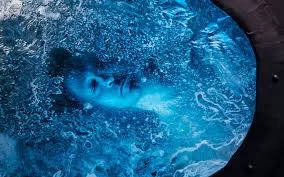

he Future of Cryonics in America: Innovations and Challenges Ahead

Cryonics – the practice of preserving individuals at ultra-low temperatures after legal death in hopes of future revival – stands at a fascinating crossroads in America. Driven by technological ambition and the desire to conquer mortality, its future hinges on navigating significant scientific, ethical, and practical hurdles, alongside promising innovations.
Innovations Shaping Tomorrow:
Advanced Vitrification: Moving beyond simple freezing, new cryoprotectant solutions and protocols aim to achieve true vitrification (glass-like solidification) with dramatically reduced cellular ice damage, particularly crucial for brain preservation.
Improved Monitoring & Control: Sophisticated sensors and AI-driven systems are being developed for real-time monitoring of temperature stability and tissue integrity during long-term storage.
Nanotechnology Prospects: Theoretical advances in molecular nanotechnology offer potential pathways for future repair at the cellular and molecular level, addressing the core challenge of reversing preservation damage.
Organ Cryopreservation: Research focused on successfully cryopreserving and reviving organs for transplantation provides valuable insights and techniques potentially applicable to whole-body preservation.
Critical Challenges to Overcome:
The Reanimation Imperative: The fundamental scientific challenge remains unproven: reversing the preservation process and restoring a whole, functioning organism, especially one with preserved consciousness and memories.
Cost & Accessibility: Cryopreservation is prohibitively expensive (often $200,000+ for whole body), limiting access and raising questions about equity and long-term financial sustainability for storage facilities.
Ethical & Philosophical Debates: Cryonics sparks intense debate regarding the definition of death, resource allocation, potential future societal impacts, and religious or philosophical objections.
Regulatory Uncertainty: The field operates largely outside specific medical or scientific regulatory frameworks, creating ambiguity around oversight, liability, and patient (or "patient") rights.
Public Perception & Legitimacy: Cryonics often faces skepticism from the mainstream scientific community and the public, hindering funding and broader acceptance.
The Road Forward:
The future of American cryonics depends heavily on demonstrable scientific progress, particularly in reversing preservation in complex tissues. Increased collaboration between cryonics organizations (like Alcor and the Cryonics Institute) and mainstream cryobiology research is vital. Addressing ethical concerns transparently and establishing clearer legal/regulatory guidelines are equally important for long-term viability.
While the dream of extending life indefinitely remains speculative, ongoing innovations in preservation techniques offer incremental steps forward. Whether cryonics evolves into a validated medical science or remains a controversial long-term bet hinges on overcoming its profound scientific and societal challenges in the decades ahead. The journey itself pushes the boundaries of low-temperature biology and our understanding of life's fragility.